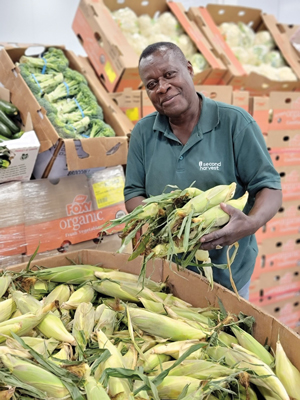By Jennifer Robins
In early 2020, Second Harvest, a Toronto area-based food rescue organization, kicked off the initial phases of a three-year strategic plan, including a national expansion of its services. We all know what happened next. The COVID-19 pandemic hit in March 2020, and the world turned upside down.
For Second Harvest, this required a huge leap of faith as they accelerated the three-year roll-out into three weeks. One of the keys to its success in expanding nationally was leveraging data and analytics to grow its donor base exponentially and quickly.
The Story
Second Harvest’s mission is to grow an efficient food recovery network to fuel people and reduce the environmental impact of avoidable food waste, a united goal of environmental protection and hunger relief. There are over 31 million tonnes of nutritious, perfectly edible food thrown out every year across the country, and Second Harvest rescues these resources and redistributes them through its partners in the invisible food network. Four times the size of grocery chains in Canada, this network includes more than 61,000 organizations that provide food to vulnerable people.
When the pandemic hit, 1 in 8 Canadian households was reported to be food insecure, growing to 1 in 6 since 2020.
At the onset of the pandemic, the team at Second Harvest adopted the mantra ‘leave no one behind’. Second Harvest immediately recognized that it needed to grow its donor base exponentially to achieve its goals. Data and analytics were the only way they would get there efficiently and effectively.
The Database
The first step in this analytics transformation was to evolve out of storing donor data in Excel spreadsheets and migrate the organization’s valuable donor data into a proper donor management system. Second Harvest integrated its donor data into Raisers Edge NXT, which has been instrumental in capturing important insights on which to base key metrics.
Data Collection
The second step was collecting additional data. The team surveyed their current donors via SurveyMonkey to understand Net Promoter Scores (NPS), donor motivations, and donor satisfaction indicators. Additionally, this included partnering with Environics Analytics to bring in market-level data to fill in the donor data gaps; this blends into step three — the Data Analysis.
Data Analysis
Through the partnership with Environics Analytics, the Second Harvest team brought its donors to life through PRIZM® segmentation. This analysis shared key demographics, giving history and patterns, channel preferences, media consumption, and core values and beliefs. Most importantly, because these data are at a postal code level, Second Harvest knew exactly where to find like-audiences across the entire country.
 Targeted Outreach
Targeted Outreach
Leveraging these donor profiles, Second Harvest started to test targeted outreach by mailing 100,000 pieces to their top three donor segments. To do this, Second Harvest partnered with Canada Post to hand-select individual PRIZM segments for an addressed mail piece. The PRIZM-targeted envelopes delivered resulted in an average gift three times higher than the test.
In parallel, the team focused on its Heart of the Harvest monthly donors. Thanks to these donors, Second Harvest is able to rescue enough food to prepare 65,000 meals monthly.
Given that Heart of Harvest donors skew younger, Second Harvest recognized that a monthly approach is ideal as this demographic is used to subscription payments for goods and services (e.g. Netflix, Spotify). The goal for this campaign was to grow the monthly donor program by 130 net new donors across Canada. The team went to work, writing scripts using SocialValues and insights from survey responses, while the telemarketing team spent 300 hours on the phones and mailed a targeted group of current donors.
Not only did Second Harvest get 130 new monthly donors, but they acquired 389 in total!
Success and Expansion
This growth in donors has supported Second Harvest in its national expansion. Since the early days of the pandemic, it has expanded from coast to coast to coast, partnered with thousands of new charities, and delivered 51 million pounds of food. The food has been delivered via transport trucks, sea lifts, airplanes, snowmobiles, sled dogs, the food rescue app, and more. Leaning into this data-driven approach, Second Harvest exceeded its 2021 target by $1M, which is an extra $2M in meals for people in need.
Pivoting strategies in the face of adversity and seeing results can be done — Second Harvest has proven this. The first step should always be to know who supports your cause and what motivates them, be it from surveys, data analytics, or in Second Harvest’s case, a mix of both.
 Jennifer Robins is the Not-for-Profit Lead at Environics Analytics. Jennifer helps healthcare clients solve their business challenges using the Environics Analytics’ suite of data products and services. She brings fifteen years of sales, marketing and analytics experience across education, travel, finance, not-for-profit, government, and healthcare industries. ©PRIZM is a registered trademark of Claritas, LLC.
Jennifer Robins is the Not-for-Profit Lead at Environics Analytics. Jennifer helps healthcare clients solve their business challenges using the Environics Analytics’ suite of data products and services. She brings fifteen years of sales, marketing and analytics experience across education, travel, finance, not-for-profit, government, and healthcare industries. ©PRIZM is a registered trademark of Claritas, LLC.




